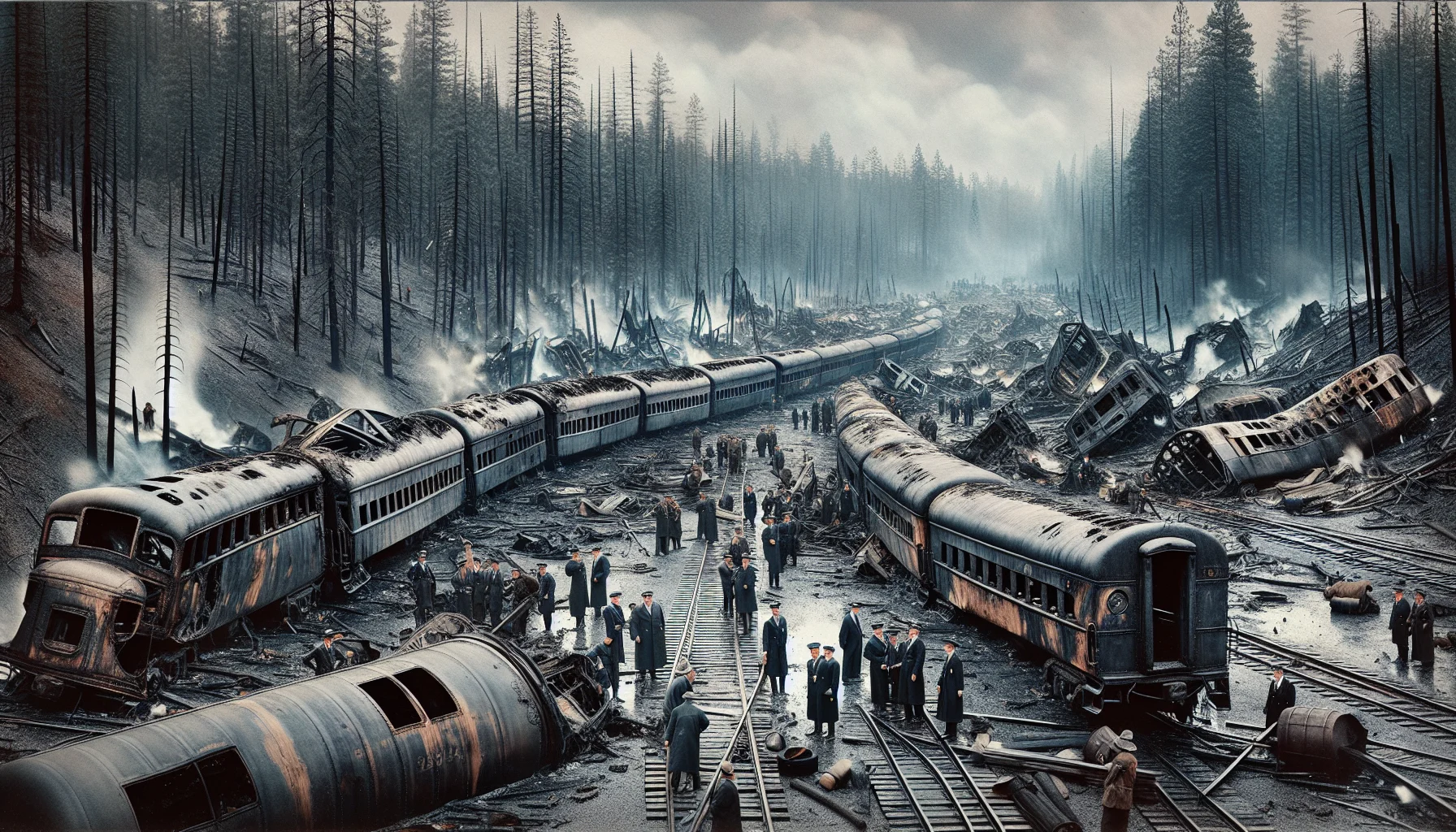
Ufa Train Disaster
by: The Calamity Calendar Team
June 4, 1989
The Quiet Build-Up to Catastrophe
In the midst of the Soviet Union's sunset years, a catastrophic disaster lurked quietly beneath the surface near Ufa, Bashkortostan. The Trans-Siberian Railway, a crucial artery stretching across continents, was stretched across sprawling natural gas fields. It was an area where critical infrastructure met the wild, unyielding landscape.
In the days leading up to June 4, 1989, a leak from a pipeline carrying liquefied petroleum gas (LPG) went unnoticed. The flammable gas crept silently into a secluded valley, the dense fog of hydrocarbons growing more potent by the hour. It was here that fate set its grim stage — and the stage was laden with invisible dangers.
The Events of a Fateful Night
As June 4 approached, two passenger trains—the 211 from Novosibirsk to Adler, and the 212 in the opposite direction—made their way down the tracks that laced through the valley. Unaware of the danger swirling in the air, travelers were locked in the rhythms of nocturnal journeys; some dozing, others looking out into the indiscernible night.
Shortly after midnight, the trains came face-to-face in the valley. Beneath them lay an invisible river of LPG, waiting for a catalyst. It didn't take long. Sparks, perhaps from a brake, an electrical fault, or even a thoughtlessly discarded cigarette, ignited the gas with brutal certainty.
The explosion that followed was cataclysmic—a wall of fire and sound that rivaled the fury of nature itself. The force was equivalent to several kilotons of TNT, turning the serene valley into a hellscape as the fireball engulfed everything within reach. Wagon after wagon was obliterated; their steel frames shredded and scattered amidst the inferno.
In the Aftermath
The scale of devastation was immediate and unforgiving. Over 500 lives were lost amid the initial chaos, with many more succumbing to injuries in the ensuing hours and days. The forest surrounding the tracks ignited, a secondary blaze that added to the misery of the night.
Thanks for subscribing!
Rescue operations, hindered by disrupted communication and debris-laden paths, managed to pull some survivors from the flames. Emergency services, stretched thin and inadequately equipped, faced the inferiority of preparedness against catastrophe. For many, ambulances became lines of sorrow, ferrying the barely alive, the injured, and the deceased.
The shockwave reached beyond the valley, damaging homes and infrastructure in nearby settlements. The economic toll mirrored the human loss—a relentless reckoning for a region unprepared for such a calamity.
A Response Under Scrutiny
This disaster compelled a nation to pause and introspect. The Soviet government, under pressure from an already strained populace, initiated investigations to unearth the failures that led to this tragedy. It was a time of severe questions and inadequate answers. The scrutiny uncovered glaring lapses in pipeline maintenance, a symptom of systemic neglect that had become all too common.
In the months that followed, efforts materialized to ensure such a disaster would never occur again. The tragic lessons learned spurred safety protocol reviews and industrial reforms. It was a testament to the resilience of survivors and the memories of those who perished.
The Lasting Impact
As the Ufa Train Disaster receded into the archives of history, its lessons became pivotal in shaping future safety standards. It revealed the vulnerabilities ingrained in Soviet-era infrastructure and highlighted the need for robust monitoring and regulation. Even as years have passed and technology has evolved, the specter of that fateful night lingers, cautioning against complacency.
Today, the Ufa Train Disaster is not just a tale of tragedy but also a chapter in the manifesto of change. The echoes of that explosion carry warnings that resonate throughout former Soviet territories—an insistence that even in progress, memory must serve as a guidepost. The disaster's legacy remains, a stark reminder of the balance between human ambition and the power of the unseen.
Stay in the Loop!
Become a Calamity Insider and get exclusive Calamity Calendar updates delivered straight to your inbox.
Thanks! You're now subscribed.